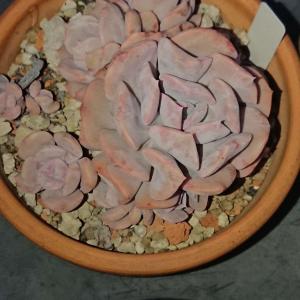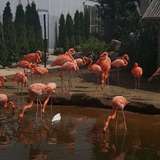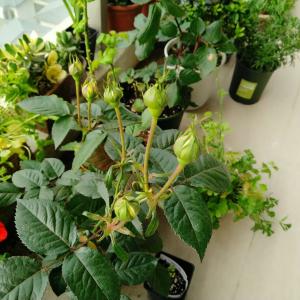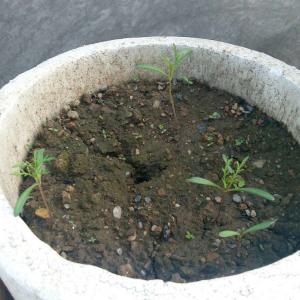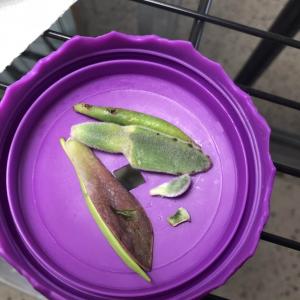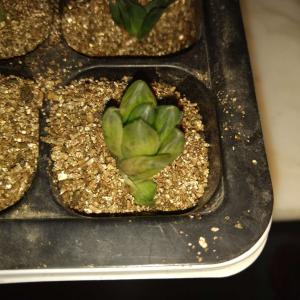文章
Miss Chen
2018年05月01日

Description: This herbaceous perennial plant produces basal leaves 4-9" long and 1½-3½" across on short petioles (usually 2-3 per bulb). The basal leaves are ovate-oval to ovate-elliptic, light to medium green, hairless, and smooth along the margins. Their petioles are reddish, hairless, and wrapped in a basal sheath below. These leaves develop during the spring and wither away by early summer. During early to mid-summer, there develops a naked flowering stalk about ½-1½' tall. This stalk is terete, glabrous, and reddish to pale green; at its base, there is a papery sheath. The stalk terminates in a single rounded umbel of flowers spanning 1-2" across; there are typically 20-40 flowers per umbel. At the base of this umbel, there is a pair of deciduous bracts. Each flower is about ¼" across, consisting of 6 white to translucent white tepals, a light green to pale yellow ovary, 6 stamens with pale yellow anthers, and a single white style. At the base of each flower, there is a slender pedicel that is white to greenish white. The blooming period occurs during the summer and lasts about 2 weeks. Both the flowers and foliage exude an onion-like odor. After the blooming period, the ovary of each flower matures into a 3-celled seed capsule; each cell contains a single globoid seed that becomes black at maturity. The root system consists of an ovoid bulb with fibrous roots at its base. Offsets often develop, producing clonal colonies of plants.
Cultivation: The preference is dappled sunlight during the spring when the basal leaves develop, while during the summer considerable shade is tolerated as the basal leaves have withered away. The soil should consist of a rich loose loam with abundant organic matter, while moisture levels should be more or less mesic. It is easiest to introduce new plants into an area by dividing and transplanting the bulbs during the fall.
Range & Habitat: The native Wild Leek occurs occasionally in central and northern Illinois, while in the southern section of the state it is rare or absent (see Distribution Map). Habitats include mesic deciduous woodlands and wooded bluffs. The presence of this species is a sign that the original flora of a woodlands is still in intact. An introduced species, Alliaria petiolata (Garlic Mustard), can shade out the basal leaves of Wild Leek during the spring, causing the latter to decline in abundance.

Faunal Associations: The flowers attract various kinds of bees, including Halictid bees, masked bees (Hylaeus spp.), honeybees, bumblebees, and mason bees. These insects suck nectar or collect pollen. To a lesser extent, the flowers are visited by Syrphid flies, which suck nectar or feed on pollen. Occasionally, the maggots of some flies feed on the bulbs of some Allium spp. (Onions), although not necessarily Wild Leek; these species include Delia antiqua (Onion Maggot), some Eumerus spp., and some Tritoxa spp. The plant bugs, Lindbergocapsus ainsliei and Lindbergocapsus allii, also feed on Allium spp. (Onions). Another species, Thrips tabaci (Onion Thrips), sucks juices from the foliage. Deer and other mammalian herbivores rarely browse on the foliage of Wild Leek.
Photographic Location: A mesic deciduous woodlands at Busey Woods in Urbana, Illinois.
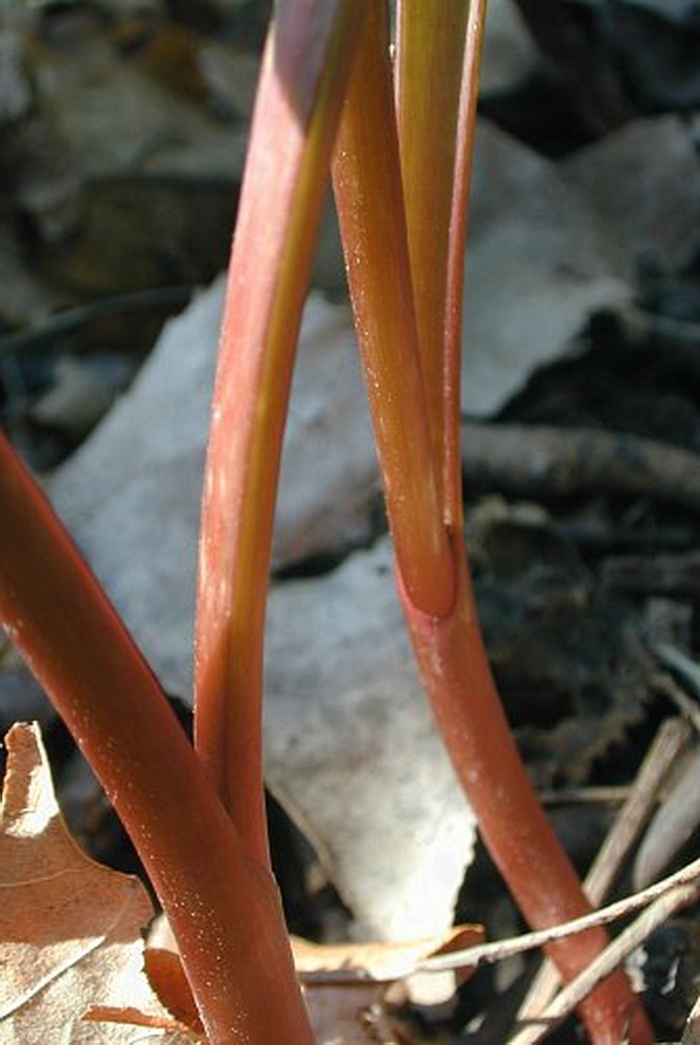
Comments: This woodland wildflower is somewhat unusual because its foliage has withered away by the time the flowers bloom. Both the foliage and flowers are attractive; the latter help to brighten the gloomy corners of woodlands during the summer. Wild Leek has the widest basal leaves (1½–3½" across) of any Allium sp. in the state. A similar species, Allium burdickii (which is also called 'Wild Leek'), has basal leaves that are about ½-1½" across. Other wild Allium spp. have leaves that are narrow and strap-like (less than ½" across). Wild Leek has about 20-40 flowers in each umbel, while Allium burdickii has 10-20 flowers in each umbel. Wild Leek has reddish leaf petioles and flowering stalks that are often reddish at the base, while the petioles and stalks of Allium burdickii are light green throughout. This latter species is restricted to wooded areas in NE Illinois and it is less common.
Cultivation: The preference is dappled sunlight during the spring when the basal leaves develop, while during the summer considerable shade is tolerated as the basal leaves have withered away. The soil should consist of a rich loose loam with abundant organic matter, while moisture levels should be more or less mesic. It is easiest to introduce new plants into an area by dividing and transplanting the bulbs during the fall.
Range & Habitat: The native Wild Leek occurs occasionally in central and northern Illinois, while in the southern section of the state it is rare or absent (see Distribution Map). Habitats include mesic deciduous woodlands and wooded bluffs. The presence of this species is a sign that the original flora of a woodlands is still in intact. An introduced species, Alliaria petiolata (Garlic Mustard), can shade out the basal leaves of Wild Leek during the spring, causing the latter to decline in abundance.

Faunal Associations: The flowers attract various kinds of bees, including Halictid bees, masked bees (Hylaeus spp.), honeybees, bumblebees, and mason bees. These insects suck nectar or collect pollen. To a lesser extent, the flowers are visited by Syrphid flies, which suck nectar or feed on pollen. Occasionally, the maggots of some flies feed on the bulbs of some Allium spp. (Onions), although not necessarily Wild Leek; these species include Delia antiqua (Onion Maggot), some Eumerus spp., and some Tritoxa spp. The plant bugs, Lindbergocapsus ainsliei and Lindbergocapsus allii, also feed on Allium spp. (Onions). Another species, Thrips tabaci (Onion Thrips), sucks juices from the foliage. Deer and other mammalian herbivores rarely browse on the foliage of Wild Leek.
Photographic Location: A mesic deciduous woodlands at Busey Woods in Urbana, Illinois.

Comments: This woodland wildflower is somewhat unusual because its foliage has withered away by the time the flowers bloom. Both the foliage and flowers are attractive; the latter help to brighten the gloomy corners of woodlands during the summer. Wild Leek has the widest basal leaves (1½–3½" across) of any Allium sp. in the state. A similar species, Allium burdickii (which is also called 'Wild Leek'), has basal leaves that are about ½-1½" across. Other wild Allium spp. have leaves that are narrow and strap-like (less than ½" across). Wild Leek has about 20-40 flowers in each umbel, while Allium burdickii has 10-20 flowers in each umbel. Wild Leek has reddish leaf petioles and flowering stalks that are often reddish at the base, while the petioles and stalks of Allium burdickii are light green throughout. This latter species is restricted to wooded areas in NE Illinois and it is less common.
0
0
文章
弄啥嘞
2018年05月01日


1、光线
它是能够水培的,但是一定需要给它所喜爱的光线,一般来说比较充足的光线是最好的,而且不能太强烈,柔和一点就很不错了。

2、水
因为水培比较直接的因素就是水了,水的量是一个比较大的问题,我们不能给它太多水,这样对它的生长毫无好处,一般来说水位要比较低,只要稍稍能够把它的根淹没就很好。一般深度是在1.5厘米左右,而且我们还要做的是经常给它的叶子喷洒水。
3、换水
换水也是很重要的,因为水不换的话里面的有机物等可能会比较多,对它的生长会有坏处,可能会导致根腐烂,而且叶子可能也会因此发黄,一般我们一个星期或者两个星期左右就要换一次水。这是很重要的一个环节,大家如果想要一盆长得特别快的三叶草,那就一定要记得做这件事。

4、陶粒
如果我们想要用陶粒养它的话,不能随意就把它加进去,一定要等水干了,再往里面加。而且陶粒养也是很好的一种方法,它长得也不会慢,速度还是很快。
5、湿度
因为这一种植物是比较喜欢湿润的环境的,所以我们还是要控制一下它的湿度,不能太低,要不然它长得肯定不会健康。
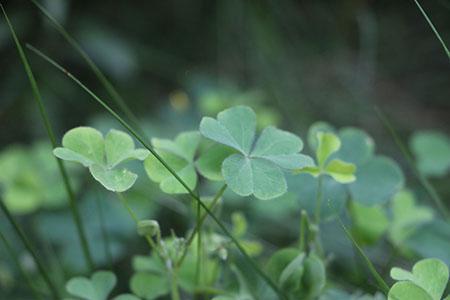
1
0
文章
Miss Chen
2018年04月30日

Description: This perennial plant produces 2-3 basal leaves during the spring. These leaves are typically 6-9" long and ¾-1½" across; they are linear-oblong or elliptic-oblong in shape with smooth margins and parallel venation. The leaf surfaces are pale green to medium green and glabrous. Leaf orientation is erect, ascending, or arched and sprawling. The petioles are very short and often hidden by ground litter; they are pale green and glabrous. By early summer, the basal leaves wither away. After a short dormant period, an erect flowering stalk is produced that is 6-20" tall. This stalk is pale green, glabrous, terete, unbranched, and naked (devoid of leaves); it is surrounded by a membranous sheath at its base. At the apex of this stalk, there is a rounded umbel of 10-20 flowers about ¾-1½" across. At the base of this umbel, there is a pair of small deciduous bracts. Each flower spans up to ¼" across, consisting of 6 white to greenish white tepals, 6 stamens, and a 3-lobed ovary with a single white style. The stamens are barely exerted above the tepals. The slender pedicels are light green to greenish white. The blooming period occurs from early to mid-summer for about 2-3 weeks. The flowers, like the foliage, have an onion-like scent. Afterwards, the flowers are replaced by 3-celled seed capsules; there is only a single seed per cell. The capsules divide into 3 sections to release their seeds. The seeds are globoid, black, and shiny. The root system consists of an ovoid bulb with fibrous roots below. Usually, this bulb is enclosed by a fibrous sheath with one or more other bulbs. Clonal offsets from the production of new bulbs often occurs, resulting in dense colonies of plants.
Cultivation: The preference is dappled sunlight during the spring, while during the summer any light level is tolerated because the basal leaves have withered away by this time. Conditions should be more or less mesic; the soil should be loamy, fertile, and relatively loose with decaying organic material. Plants should not be transplanted when the basal leaves are present.
Range & Habitat: The native Narrow-Leaved Wild Leek (Allium burdickii) is occasional in NE and east-central Illinois, while in the the rest of the state it is uncommon or absent (see Distribution Map). This species is found primarily in the upper Midwest. Because Narrow-Leaved Wild Leek has not been reliably distinguished from the more common Wild Leek (Allium tricoccum) in the past, it is probably more common and widespread than official records indicate. Habitats include rich deciduous woodlands, wooded bluffs, wooded areas along rivers and streams, and cemetery prairies. Narrow-Leaved Wild Leek is an indicator that the original ground flora of a woodlands is still intact. It is currently threatened by the spread of an invasive European species, Garlic Mustard (Alliaria petiolata), in wooded areas. Narrow-Leaved Wild Leek is found in higher quality natural areas.

Faunal Associations: The flower pollinators are probably similar to those of Allium tricoccum (Wild Leek), consisting of various bees and flies. Both nectar and pollen are available as floral rewards to such visitors. Insects that feed on the bulbs, foliage, flowers, or seeds are poorly understood for Narrow-Leaved Wild Leek (Allium burdickii). However, insects that are known to feed on one or more Allium spp. (Onions) include: the larvae of Delia antiqua (Onion Maggot), Eumerus strigatus (Onion Bulb Fly), and Eumerus tuberculatus (Lesser Bulb Fly); the plant bugs Lindbergocapsus ainsliei and Lindbergocapsus allii; and Thrips tabaci (Onion Thrips). Mammalian herbivores usually avoid consumption of the foliage.
Photographic Location: Mesic woodlands in Piatt County and Vermilion County in east-central Illinois; also a cemetery prairie in Champaign County, Illinois.

Comments: Some authorities consider Narrow-Leaved Wild Leek to be a variety of the more common Wild Leek, or Allium tricoccum burdickii (see eFloras, FNA Vol. 26, pp. 224-226), while other authorities consider this species to be distinct, Allium burdickii (Mohlenbrock, 2002). The latter viewpoint has been adopted here. Narrow-Leaved Wild Leek can be distinguished from Wild Leek by its more narrow leaves (less than 1½" across), greenish petioles (rather than reddish), fewer-flowered umbels (less than 21 flowers). The bulbs of Narrow-Leaved Wild Leek are also supposed to be smaller in size, and the stamens of its flowers may be less exerted than those of Wild Leek. Because the range of these two species (or varieties) overlap, it is possible that they hybridize. As a result, some collected or photographed specimens may be difficult to classify. Both of these species (or varieties) are distinct from other Allium spp. in Illinois by their wider leaves and the absence of these leaves when the flowers bloom.
Cultivation: The preference is dappled sunlight during the spring, while during the summer any light level is tolerated because the basal leaves have withered away by this time. Conditions should be more or less mesic; the soil should be loamy, fertile, and relatively loose with decaying organic material. Plants should not be transplanted when the basal leaves are present.
Range & Habitat: The native Narrow-Leaved Wild Leek (Allium burdickii) is occasional in NE and east-central Illinois, while in the the rest of the state it is uncommon or absent (see Distribution Map). This species is found primarily in the upper Midwest. Because Narrow-Leaved Wild Leek has not been reliably distinguished from the more common Wild Leek (Allium tricoccum) in the past, it is probably more common and widespread than official records indicate. Habitats include rich deciduous woodlands, wooded bluffs, wooded areas along rivers and streams, and cemetery prairies. Narrow-Leaved Wild Leek is an indicator that the original ground flora of a woodlands is still intact. It is currently threatened by the spread of an invasive European species, Garlic Mustard (Alliaria petiolata), in wooded areas. Narrow-Leaved Wild Leek is found in higher quality natural areas.

Faunal Associations: The flower pollinators are probably similar to those of Allium tricoccum (Wild Leek), consisting of various bees and flies. Both nectar and pollen are available as floral rewards to such visitors. Insects that feed on the bulbs, foliage, flowers, or seeds are poorly understood for Narrow-Leaved Wild Leek (Allium burdickii). However, insects that are known to feed on one or more Allium spp. (Onions) include: the larvae of Delia antiqua (Onion Maggot), Eumerus strigatus (Onion Bulb Fly), and Eumerus tuberculatus (Lesser Bulb Fly); the plant bugs Lindbergocapsus ainsliei and Lindbergocapsus allii; and Thrips tabaci (Onion Thrips). Mammalian herbivores usually avoid consumption of the foliage.
Photographic Location: Mesic woodlands in Piatt County and Vermilion County in east-central Illinois; also a cemetery prairie in Champaign County, Illinois.

Comments: Some authorities consider Narrow-Leaved Wild Leek to be a variety of the more common Wild Leek, or Allium tricoccum burdickii (see eFloras, FNA Vol. 26, pp. 224-226), while other authorities consider this species to be distinct, Allium burdickii (Mohlenbrock, 2002). The latter viewpoint has been adopted here. Narrow-Leaved Wild Leek can be distinguished from Wild Leek by its more narrow leaves (less than 1½" across), greenish petioles (rather than reddish), fewer-flowered umbels (less than 21 flowers). The bulbs of Narrow-Leaved Wild Leek are also supposed to be smaller in size, and the stamens of its flowers may be less exerted than those of Wild Leek. Because the range of these two species (or varieties) overlap, it is possible that they hybridize. As a result, some collected or photographed specimens may be difficult to classify. Both of these species (or varieties) are distinct from other Allium spp. in Illinois by their wider leaves and the absence of these leaves when the flowers bloom.
0
0
文章
Miss Chen
2018年04月30日

Description: This perennial wildflower is 1–2½' tall and either unbranched or sparingly branched. The alternate compound leaves are 2- or 3-pinnate and large in size; the leaflets are organized into groups of 3 (less often 5). The lower compound leaves have long petioles, while the petioles of the upper compound leaves are shorter. The leaflets are up to 4" long and 2¼" across; they are more or less ovate in shape, while their margins are shallowly cleft and strongly toothed. Usually, the terminal leaflets are a little larger than the lateral leaflets; the terminal leaflets have slender petiolules (leaflet stalks), while the lateral leaflets are either sessile or they have slender petiolules. The upper surface of each leaflet is dull green and hairless; the lower surface is also hairless. A raceme of white flowers on a long naked peduncle develops from the axil of the uppermost compound leaf. Initially, this raceme is about 1½–3" long and short-cylindrical in shape, but it becomes longer (3-6") when its flowers are replaced with berries. Each raceme has 10-28 flowers on widely spreading pedicels; these pedicels are short (about ½"), glabrous, and stout.

Each flower spans about ¼" across, consisting of 4-10 white petals, a dozen or more white stamens, and a superior ovary with a short stout style. At the tip of this style is a large persistent stigma that is translucent white (although it later becomes dark). The sepals are early-deciduous and insignificant. Each petal is narrowly oblanceolate and often truncate at its tip. The blooming period occurs from late spring to very early summer; it lasts about 2 weeks. The flowers are replaced by berries that are ovoid-globoid and up to 1/3" (8 mm.) in length. These berries become bright white when they are mature, while the pedicels and central axis of the raceme become bright red. At the outer end of each berry, there is a dark spot from the persistent stigma. Inside each berry, there are several seeds (fewer than 10). The root system is fibrous and rhizomatous.
Cultivation: Dappled sunlight to medium shade, moist to mesic conditions, and a fertile loamy soil with abundant organic matter is preferred. The compound leaves may become yellowish if they are exposed to excessive sunlight.
Range & Habitat: The native Doll's Eyes is occasional throughout Illinois (see Distribution Map). Habitats include rich deciduous woodlands, ravines, thinly wooded bluffs, the bases of bluffs, and shaded seeps. This species is found in high quality woodlands where the original ground flora is intact.
Faunal Associations: The flowers lack nectar and provide only pollen to visiting insects. These visitors are mainly Halictid bees; Robertson (1929) observed Augochlorella striata, Lasioglossum pectoralis, and Lasioglossum zephyrus. Various birds eat the white berries to a limited extent; this includes the Ruffed Grouse, Yellow-Bellied Sapsucker, and American Robin (Eastman, 1992; pp. 12-13). These birds help to distribute the seeds to a new areas. The White-Footed Mouse also eats the berries. Because the foliage is toxic from a cardiac glycoside, it is not eaten by mammalian herbivores. Other parts of this plant are toxic as well, although birds are apparently immune to the toxic effects of the berries. The overall value of this wildflower to wildlife is low.

Photographic Location: Deciduous woodlands in east-central Illinois.
Comments: This is one of many wonderful wildflowers that can be found in eastern deciduous woodlands during the spring. Doll's Eyes has attractive foliage and striking white berries, which become mature during the late summer or early fall. These berries resemble the eyes of old-fashioned china dolls, hence the common name. Another common name of this species is White Baneberry, which refers to the appearance of the berries and their toxic nature to humans. Another scientific name of this species is Actaea alba. The other species in this genus, Actaea rubra (Red Baneberry), is restricted to northern Illinois. This latter species has red berries (usually) and the pedicels of its flowers/berries are more slender than those of Doll's Eyes. Each berry of Red Baneberry contains more seeds (10 or more) than a berry of Doll's Eyes, and its seeds are smaller in size. However, there is an uncommon form of Red Baneberry that produces white berries.

Each flower spans about ¼" across, consisting of 4-10 white petals, a dozen or more white stamens, and a superior ovary with a short stout style. At the tip of this style is a large persistent stigma that is translucent white (although it later becomes dark). The sepals are early-deciduous and insignificant. Each petal is narrowly oblanceolate and often truncate at its tip. The blooming period occurs from late spring to very early summer; it lasts about 2 weeks. The flowers are replaced by berries that are ovoid-globoid and up to 1/3" (8 mm.) in length. These berries become bright white when they are mature, while the pedicels and central axis of the raceme become bright red. At the outer end of each berry, there is a dark spot from the persistent stigma. Inside each berry, there are several seeds (fewer than 10). The root system is fibrous and rhizomatous.
Cultivation: Dappled sunlight to medium shade, moist to mesic conditions, and a fertile loamy soil with abundant organic matter is preferred. The compound leaves may become yellowish if they are exposed to excessive sunlight.
Range & Habitat: The native Doll's Eyes is occasional throughout Illinois (see Distribution Map). Habitats include rich deciduous woodlands, ravines, thinly wooded bluffs, the bases of bluffs, and shaded seeps. This species is found in high quality woodlands where the original ground flora is intact.
Faunal Associations: The flowers lack nectar and provide only pollen to visiting insects. These visitors are mainly Halictid bees; Robertson (1929) observed Augochlorella striata, Lasioglossum pectoralis, and Lasioglossum zephyrus. Various birds eat the white berries to a limited extent; this includes the Ruffed Grouse, Yellow-Bellied Sapsucker, and American Robin (Eastman, 1992; pp. 12-13). These birds help to distribute the seeds to a new areas. The White-Footed Mouse also eats the berries. Because the foliage is toxic from a cardiac glycoside, it is not eaten by mammalian herbivores. Other parts of this plant are toxic as well, although birds are apparently immune to the toxic effects of the berries. The overall value of this wildflower to wildlife is low.

Photographic Location: Deciduous woodlands in east-central Illinois.
Comments: This is one of many wonderful wildflowers that can be found in eastern deciduous woodlands during the spring. Doll's Eyes has attractive foliage and striking white berries, which become mature during the late summer or early fall. These berries resemble the eyes of old-fashioned china dolls, hence the common name. Another common name of this species is White Baneberry, which refers to the appearance of the berries and their toxic nature to humans. Another scientific name of this species is Actaea alba. The other species in this genus, Actaea rubra (Red Baneberry), is restricted to northern Illinois. This latter species has red berries (usually) and the pedicels of its flowers/berries are more slender than those of Doll's Eyes. Each berry of Red Baneberry contains more seeds (10 or more) than a berry of Doll's Eyes, and its seeds are smaller in size. However, there is an uncommon form of Red Baneberry that produces white berries.
0
0
文章
Miss Chen
2018年04月30日

Description: This plant is a summer annual about ½–2½' tall that is either unbranched or occasionally branched. The stems are light to medium green, terete, and glabrous to sparsely pubescent. The alternate leaves are more closely spaced together along the upper stems than the lower ones, providing the plant with a flat-topped appearance. The blades of individual leaves are up to 3" long and 2¼" across, medium green, ovate to broadly ovate, and crenate-serrate along the margins. The upper surfaces of the blades are sparsely covered with fine appressed hairs or they are hairless. The long slender petioles are up to 2½" long and light to medium green; they are covered with fine appressed hairs, or hairless. Sometimes the blades of the leaves droop from their petioles.
Deam's Mercury is monoecious with separate staminate (male) and pistillate (female) flowers on the same plant. Both types of flowers develop together from the axils of the leaves; they are surrounded by foliaceous floral bracts that are palmately divided into 5-9 lobes. Individual bracts are about ½" tall and a little longer across; they are light to medium green and either widely open or loosely folded in one direction. Individual lobes of the floral bracts are about ¼" long, lanceolate in shape, and ciliate. From the middle of each floral bract, the staminate flowers form a single spike-like raceme on a peduncle. Together, the raceme and its peduncle are about ½" long at maturity. Individual staminate flowers are less than 1/8" (3 mm.) across, consisting of a 4-lobed calyx, several stamens with yellow anthers, and no petals. There are also 1-3 pistillate flowers that areDistribution Map hidden at the base of each floral bract; individual pistillate flowers consist of an ovary with finely branched styles, insignificant sepals, and no petals. The ovary is sometimes finely hairy near its apex. The blooming period occurs from mid-summer into the fall and lasts about 2-3 months; only a few flowers are in bloom at the same time. Cross-pollination occurs by wind. Each ovary matures into a seed capsule (about ¼" across) that is globoid, slightly flattened, and 2-valved. Each valve of the capsule contains a single seed. Individual mature seeds are 2-3 mm. long (or longer), ovoid, and dark-colored. This plant reproduces by reseeding itself. The leaves become copper-colored during the fall.
Cultivation: The preference is dappled sunlight to medium shade, moist conditions, and soil consisting of sandy loam or gravelly loam. Most growth and development occurs during the summer and early fall.
Range & Habitat: The native Deam's Mercury is a rare plant that has been found in a few counties of east-central and southern Illinois. This plant is also uncommon in other states where it has been found. Habitats consist of bottomland woodlands along rivers, openings in bottomland woods, areas along paths in bottomland woods, woodland edges, and semi-shaded to shaded areas along roads. Deam's Mercury appears to prefer areas that are subjected to occasional flooding during the spring. Such areas typically have flood-deposited sand, silt, or gravel and scant ground vegetation.
Faunal Associations: The flea beetles Hornaltica bicolorata and Margaridisa atriventris feed on Acalypha spp. The seeds of these plants are eaten by the Mourning Dove and Swamp Sparrow, while White-Tailed Deer browse on the foliage (primarily during the summer and fall). Deam's Mercury and similar species lack the toxic white latex that is typical of species in the Spurge family (Euphorbiaceae).
Photographic Location: Along a path of a bottomland woodland near the Embarass River in Coles County, Illinois (Fox Ridge State Park).

Comments: Deam's Mercury is the least common native Acalypha spp. in Illinois. It has 2-valved seed capsules, larger seeds (exceeding 2 mm. long), and tends to have wider leaves than other Acalypha spp. It is most similar to the very common Acalypha rhomboidea, which has similar floral bracts with 5-9 lobes, but differs from this species in the characteristics that are mentioned above. In the past, Deam's Mercury has been regarded as a variety of Acalypha rhomboidea, but it is now considered a distinct species. Other common names of Acalypha deamii are Deam's Copperleaf, Large-Seeded Copperleaf, and Large-Seeded Mercury.
Deam's Mercury is monoecious with separate staminate (male) and pistillate (female) flowers on the same plant. Both types of flowers develop together from the axils of the leaves; they are surrounded by foliaceous floral bracts that are palmately divided into 5-9 lobes. Individual bracts are about ½" tall and a little longer across; they are light to medium green and either widely open or loosely folded in one direction. Individual lobes of the floral bracts are about ¼" long, lanceolate in shape, and ciliate. From the middle of each floral bract, the staminate flowers form a single spike-like raceme on a peduncle. Together, the raceme and its peduncle are about ½" long at maturity. Individual staminate flowers are less than 1/8" (3 mm.) across, consisting of a 4-lobed calyx, several stamens with yellow anthers, and no petals. There are also 1-3 pistillate flowers that areDistribution Map hidden at the base of each floral bract; individual pistillate flowers consist of an ovary with finely branched styles, insignificant sepals, and no petals. The ovary is sometimes finely hairy near its apex. The blooming period occurs from mid-summer into the fall and lasts about 2-3 months; only a few flowers are in bloom at the same time. Cross-pollination occurs by wind. Each ovary matures into a seed capsule (about ¼" across) that is globoid, slightly flattened, and 2-valved. Each valve of the capsule contains a single seed. Individual mature seeds are 2-3 mm. long (or longer), ovoid, and dark-colored. This plant reproduces by reseeding itself. The leaves become copper-colored during the fall.
Cultivation: The preference is dappled sunlight to medium shade, moist conditions, and soil consisting of sandy loam or gravelly loam. Most growth and development occurs during the summer and early fall.
Range & Habitat: The native Deam's Mercury is a rare plant that has been found in a few counties of east-central and southern Illinois. This plant is also uncommon in other states where it has been found. Habitats consist of bottomland woodlands along rivers, openings in bottomland woods, areas along paths in bottomland woods, woodland edges, and semi-shaded to shaded areas along roads. Deam's Mercury appears to prefer areas that are subjected to occasional flooding during the spring. Such areas typically have flood-deposited sand, silt, or gravel and scant ground vegetation.
Faunal Associations: The flea beetles Hornaltica bicolorata and Margaridisa atriventris feed on Acalypha spp. The seeds of these plants are eaten by the Mourning Dove and Swamp Sparrow, while White-Tailed Deer browse on the foliage (primarily during the summer and fall). Deam's Mercury and similar species lack the toxic white latex that is typical of species in the Spurge family (Euphorbiaceae).
Photographic Location: Along a path of a bottomland woodland near the Embarass River in Coles County, Illinois (Fox Ridge State Park).

Comments: Deam's Mercury is the least common native Acalypha spp. in Illinois. It has 2-valved seed capsules, larger seeds (exceeding 2 mm. long), and tends to have wider leaves than other Acalypha spp. It is most similar to the very common Acalypha rhomboidea, which has similar floral bracts with 5-9 lobes, but differs from this species in the characteristics that are mentioned above. In the past, Deam's Mercury has been regarded as a variety of Acalypha rhomboidea, but it is now considered a distinct species. Other common names of Acalypha deamii are Deam's Copperleaf, Large-Seeded Copperleaf, and Large-Seeded Mercury.
0
0





